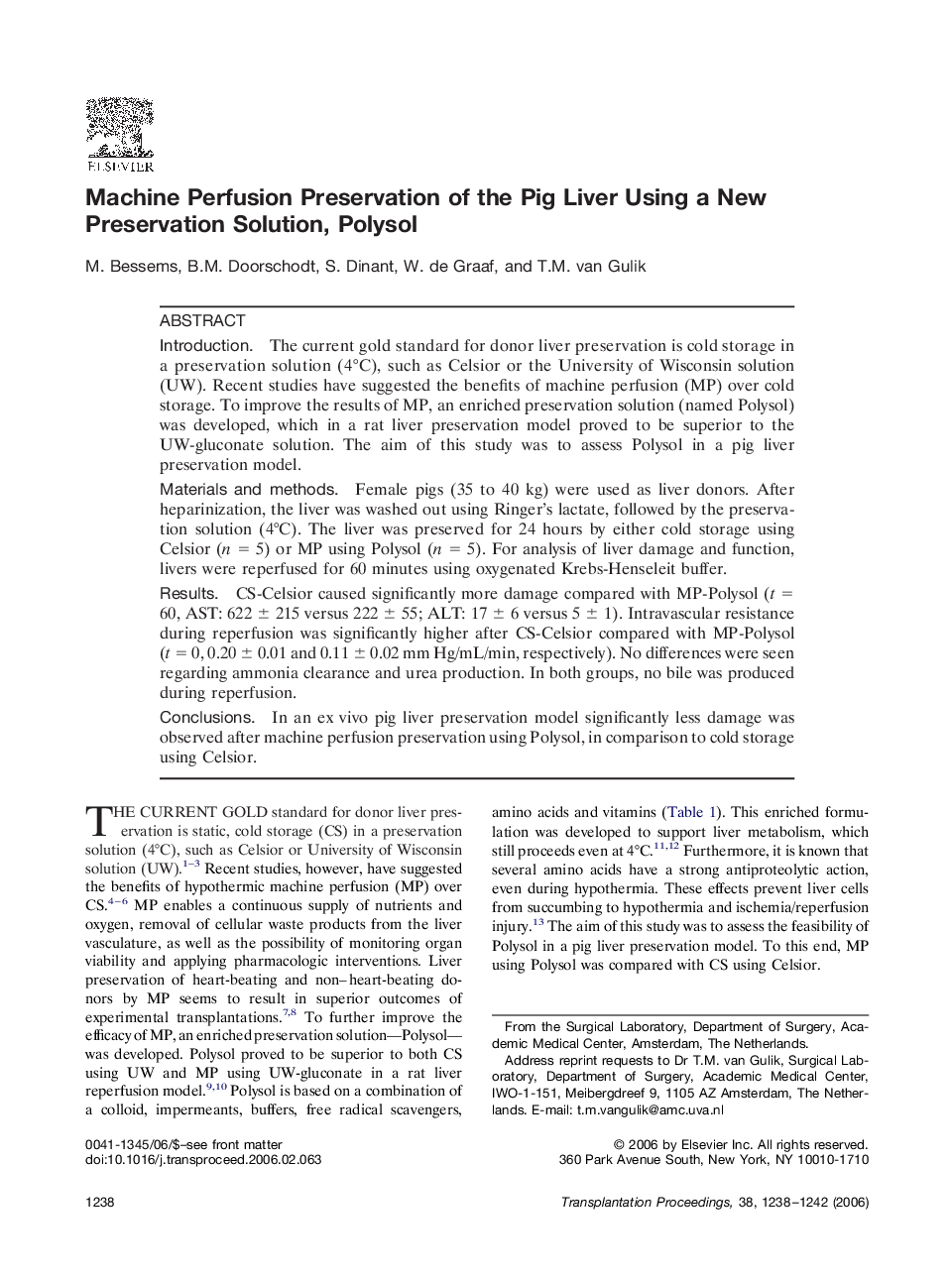| Article ID | Journal | Published Year | Pages | File Type |
|---|---|---|---|---|
| 4263405 | Transplantation Proceedings | 2006 | 5 Pages |
IntroductionThe current gold standard for donor liver preservation is cold storage in a preservation solution (4°C), such as Celsior or the University of Wisconsin solution (UW). Recent studies have suggested the benefits of machine perfusion (MP) over cold storage. To improve the results of MP, an enriched preservation solution (named Polysol) was developed, which in a rat liver preservation model proved to be superior to the UW-gluconate solution. The aim of this study was to assess Polysol in a pig liver preservation model.Materials and methodsFemale pigs (35 to 40 kg) were used as liver donors. After heparinization, the liver was washed out using Ringer’s lactate, followed by the preservation solution (4°C). The liver was preserved for 24 hours by either cold storage using Celsior (n = 5) or MP using Polysol (n = 5). For analysis of liver damage and function, livers were reperfused for 60 minutes using oxygenated Krebs-Henseleit buffer.ResultsCS-Celsior caused significantly more damage compared with MP-Polysol (t = 60, AST: 622 ± 215 versus 222 ± 55; ALT: 17 ± 6 versus 5 ± 1). Intravascular resistance during reperfusion was significantly higher after CS-Celsior compared with MP-Polysol (t = 0, 0.20 ± 0.01 and 0.11 ± 0.02 mm Hg/mL/min, respectively). No differences were seen regarding ammonia clearance and urea production. In both groups, no bile was produced during reperfusion.ConclusionsIn an ex vivo pig liver preservation model significantly less damage was observed after machine perfusion preservation using Polysol, in comparison to cold storage using Celsior.
